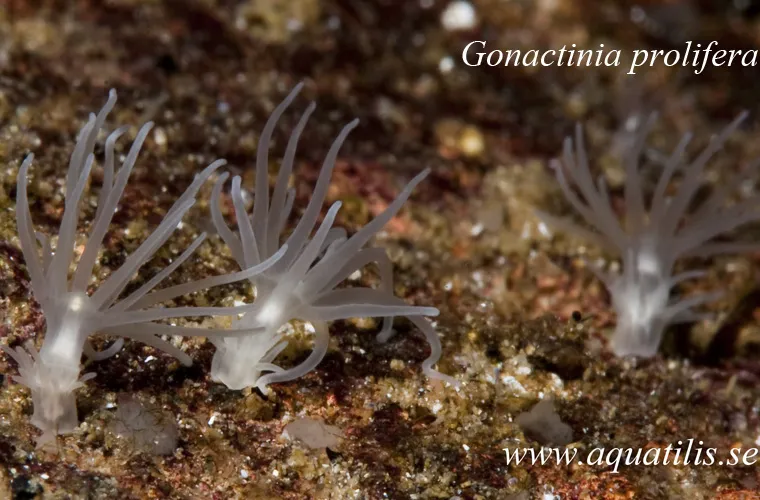Sea anemones (Actiniaria)
Anemones belong to the group cnidarian animals and are closely related to corals and jellyfish. Anemones are typically a polyp with stinging cells in their tentacles. The stinging cells paralyze and capture prey, which is then moved with the aid of tentacles to the mouth and melted in a central body cavity. Anemones have a "base plate" that it uses to attach itself to rocks or similar surfaces. The foot is not permanently attached to the surface, so the anemone can move, albeit very slowly. Some species attach themselves to seaweed and some are free swimming. The larval stage is always swimming.
There are about 30 known species on the Swedish west coast, including several in shallow water. In the whole world, there are about 1200 species. Some anemones also live in symbiosis with crabs and anemone fishes. Those that live in symbiosis with crabs attach themselves to their shell and is there as a protection for the crab because it is poisonous. And in turn, the anemones can make use of leftovers as the crab unravels. The symbiosis with clown fish works well because the fish have a special mucous layer that protects them from the anemone's poisonous tentacles the anemone can get the food scraps from the fish, which is advantageous.









